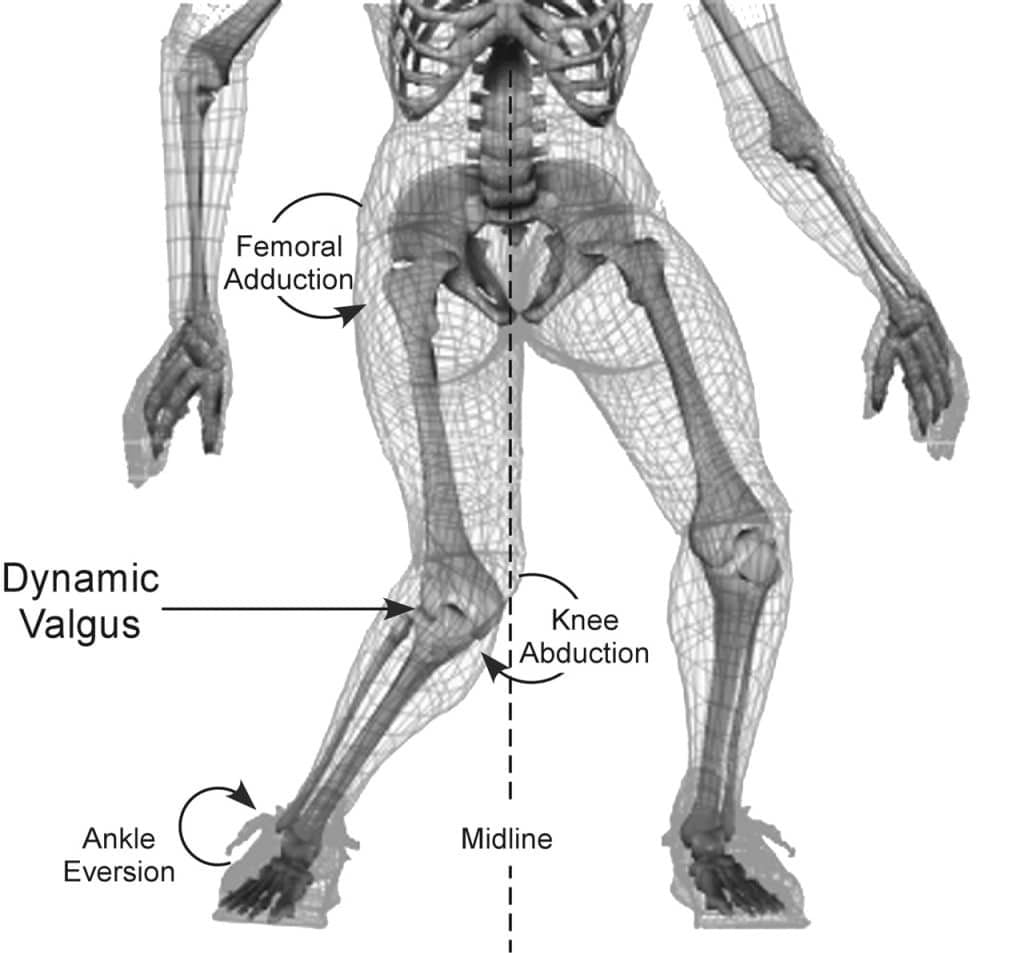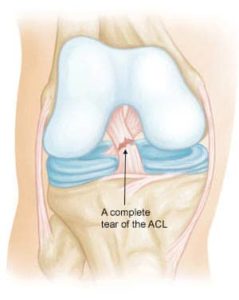
Despite extensive research, better diagnostic skills and reconstructive techniques, Anterior Cruciate Ligament (ACL) tears are still a devastating injury with significant short and long term implications. Females are 5-6 times more likely to sustain an ACL tear when compared to males. Year round sports participation, especially in the same sport, and the explosion of intensive sports specific coaching programs have put our youngsters at even great risk. Anterior Cruciate Ligament tear prevention, particularly in females has been proven to be a realistic goal by some encouraging evidence and publications about ACL tear prevention programs.
ACL Tears: Mechanism
Most people believe that a significant collision or violent trauma must take place for an ACL tear to occur. In reality, we know that upwards of 75% of ACL tears occur from a cutting, pivoting or twisting non-contact injury. When the athlete pivots, the ACL gives way, a pop is felt or heard and significant swelling will typically follow in short order.
ACL Tear Risk Factors in Females:
Many researchers have found that females are at risk for an ACL injury because of a multitude of cumulative factors:
- Their anatomy (the bone surrounding the ACL is narrower)
- Females tend to be Quadriceps dominant- (the hamstrings are thought to protect from an ACL Tear)
- The ACL is estrogen sensitive and is weaker during certain times in a women’s ovulatory cycle.
- The position the knee is in when a female lands from a jump is more likely to lead to an ACL tear.

ACL Tears : Gender Agnostic (probable) Risk Factors
- Poor trunk (core) strength and control.
- Fatigue
- Leg dominance :Relying more on one leg than the other leading to asymmetry
Anterior Cruciate Ligament Tear Prevention
Over the decade we have started to focus a lot of attention on preventing ACL tears. The science is clear on this topic.
- At risk youngster can be identified (Landing Error Scoring System)
- Screening programs work !
- While our anatomy can not be changed…
- We can alter the “neuromuscular” response of the body when landing
- We can train at risk individuals to improve:
- Core strength
- Poor landing mechanics
- Poor leaping mechanics
- muscle imbalance
- overall power and endurance
ACL Tear Prevention Should be a Core Strategy
There are many proven ACL tear prevention programs out there. One is the PEP (Prevent Injury and Enhance Performance Program) which was developed by the Santa Monica Sports Medicine Foundation.
There is little question that these programs work. The issue is that this takes a lot of work to implement these programs which is the likely reason they have not scaled to date.
We owe it to our young athletes … if we invest the effort at better screening and enroll our athletes in year round programs to improve their skills and mechanics we can spare many the devastating effects of an ACL tear.
It’s time we take ACL tear prevention seriously!
Do you have questions regarding an Orthopedic injury or longevity?
Do you want to talk to an expert who can listen to you for 45-60 minutes and explain the options in detail?
Dr. Howard Luks offers remote guidance sessions to review your X-ray or MRI images and explain your options.
Dr. Luks has also received hundreds of requests for educational sessions on the topics discussed in his book, Longevity Simplified.













Radha
Great blog. Very useful information.
Are there any medicines which can prevent cartilage degeneration?
Jai Catalano
Interesting about women and ACL tears. My wife complains about knee soreness a lot and she is active so now I can point her in the direction of some interesting facts. Thanks.
Brian Sabb
Hi Dr. Luks,
This is a great discussion on ACL tears in females. Thanks for reviewing the special considerations in women. The link to PEP will certainly come in handy.
Keep up the great work on your blog.
Sincerely.
Dr. Brian Sabb
http://www.linkedin.com/in/briansabb
Thanks Brian… I appreciate you stopping by and taking the time to comment.
Howard